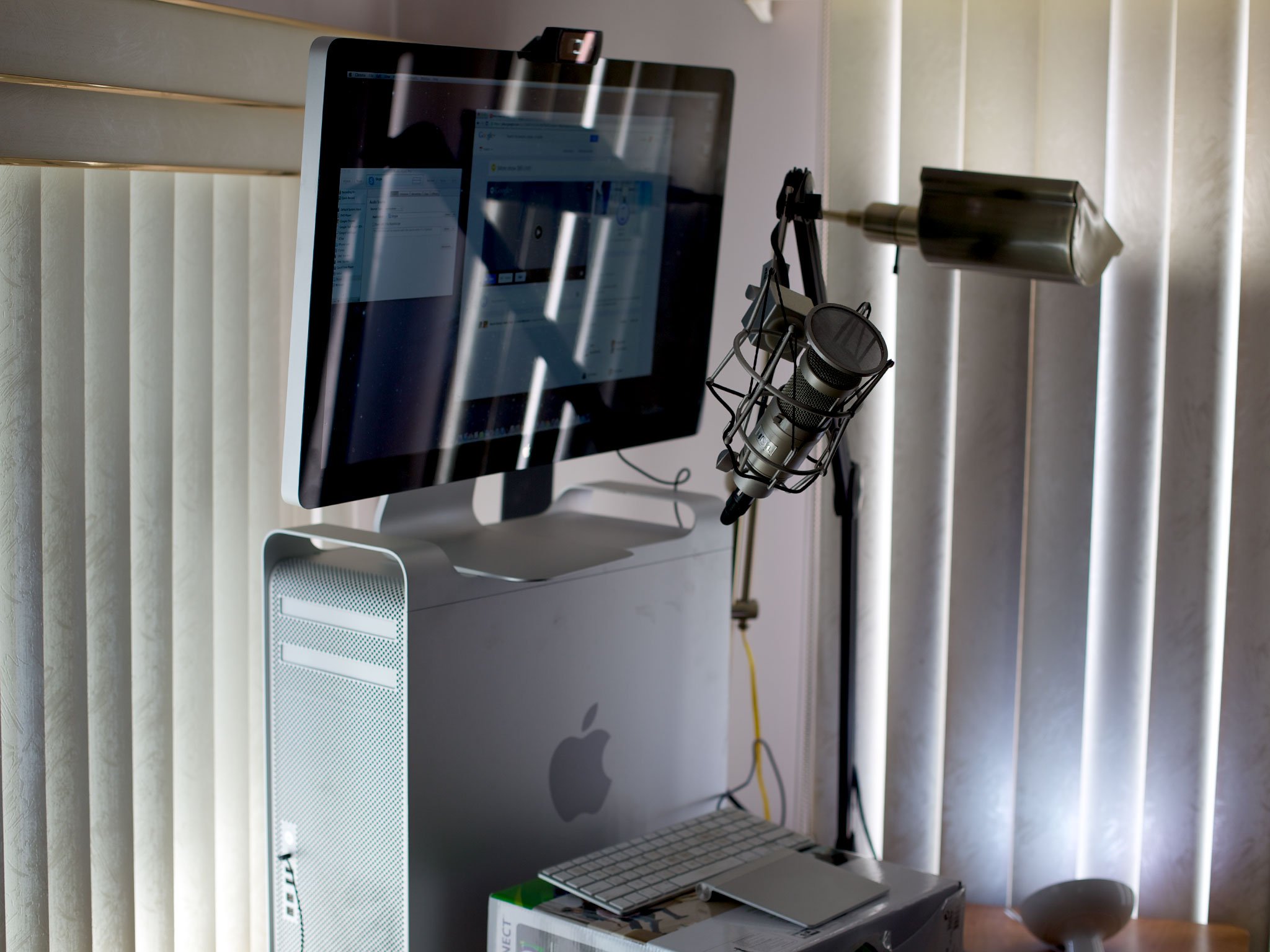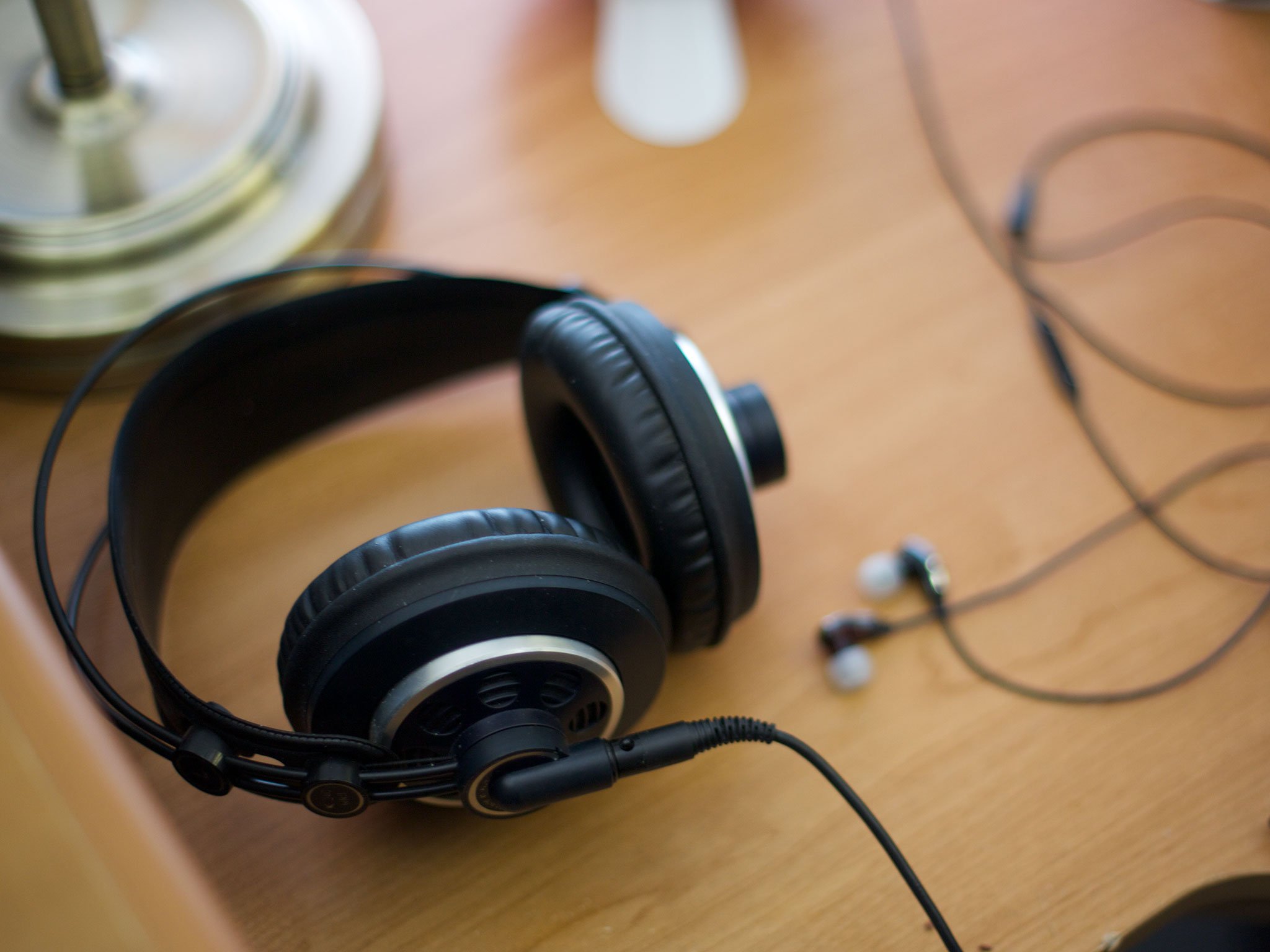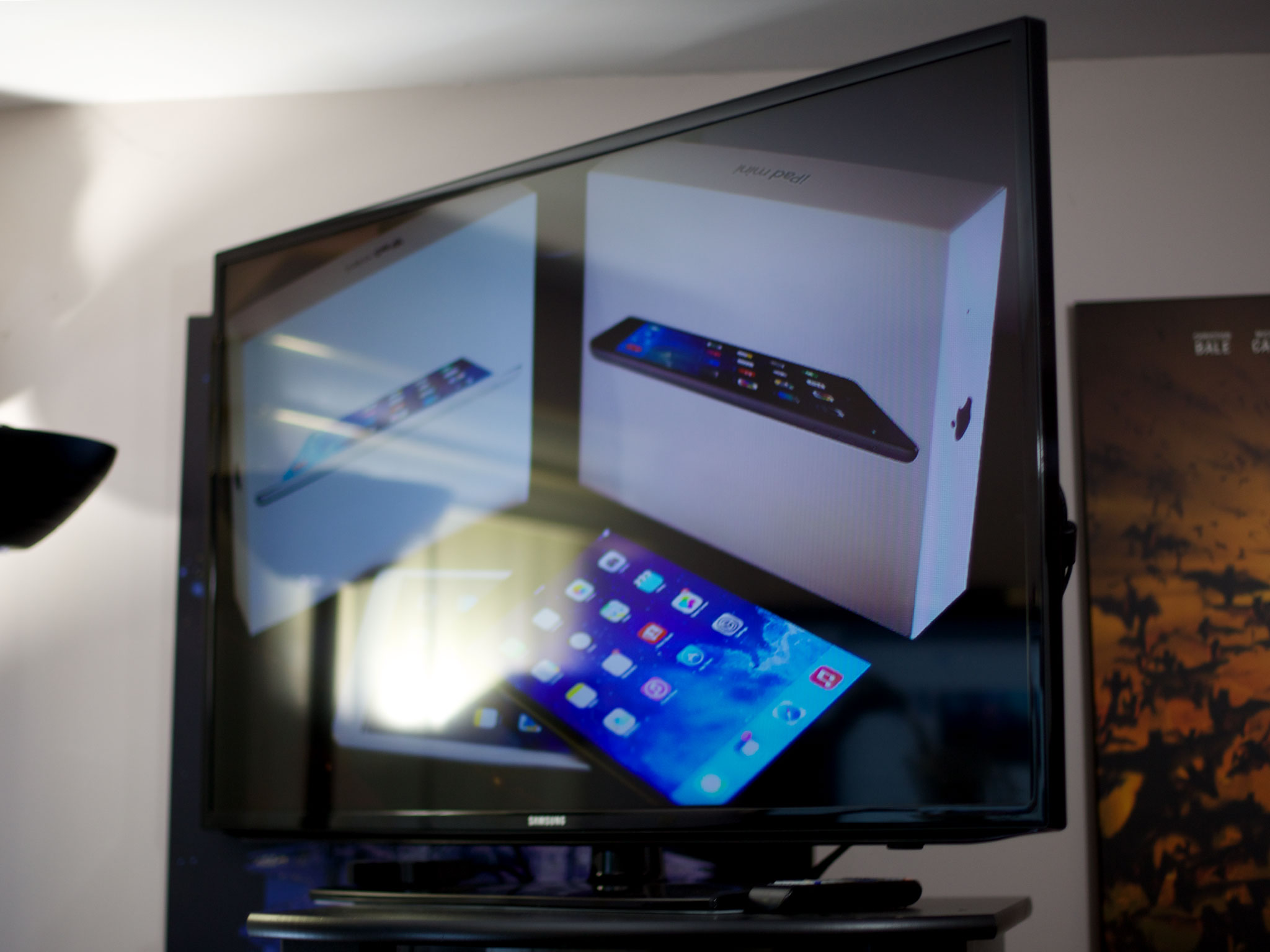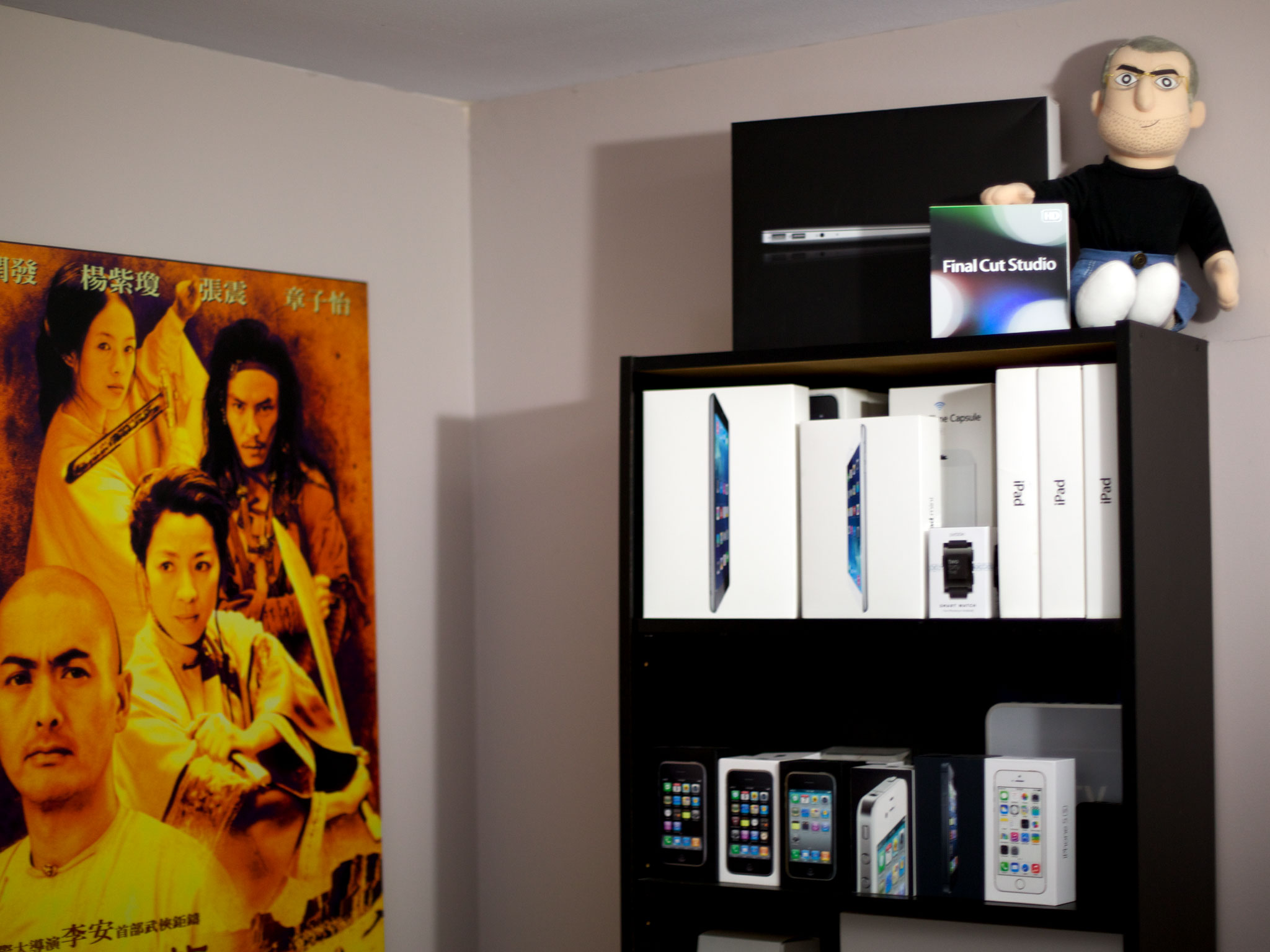iMore and Mobile Nations podcasts: Behind the scenes!

One of the most frequent questions I've been getting lately, both here and on Twitter, is — how do we run podcasts on iMore and Mobile Nations? So, we grabbed some video gear, hit the studio, and knocked out this quick behind-the-scenes tour of all the equipment I use, and how I currently use it. Check it out!
What I do now is very different than what I did last year. The main reason for that is because we switched away from a Skype-asaurus to Google Hangouts. Not only does that prevent crashes from wiping out entire shows (!!!), it's free, easy to use, and available to just about everyone. Switching to Hangouts also allowed me to pull out the complicated mix-minus audio setup, which involved 6 PC laptops, a mixer, a pre-amp, a compressor, and more. So many boxes gone. So many cables. So much cleaner! So what's left?
The heart of my setup is a first generation Nehalem Mac Pro. That's right, an old-school cheese-grator! Ethernet comes into it from my cable modem, and that's important because Wi-Fi is just never reliable enough for podcasting.
Yes, my keyboard and trackpad really do sit on top of an old Xbox 360 box right now. I haven't found anything aesthetically pleasing to do the job properly, and its the right hight. If you have a better idea, let me know! As for the Magic Trackpad itself, I use a MacBook most of the time and multitouch is muscle memory for me now, which makes trackpads simply a better and more consistent interface for me than a mouse.

I use two different headsets, one for audio podcasting, one for video. The AKG K240 don't look great but they're super comfortable and sound terrific. The Ultimate Ears 600vi all but disappear, and include a very convenient shirt clip that helps prevent them falling out, even when I move around a bit.
For a microphone, I use the Heil PR-40 because, Leo Laporte. My voice isn't great, so I can use all the help I can get, and once you go Heil, there's no going back. Because it's an XLR mic, and because I dumped all the audio boxes from my setup, I now use an Apogee One as my USB interface. It's compact and convenient.
The primary screen on my Mac Pro is a 27-inch Apple Cinema Display. It's the predecessor of the Thunderbolt Display, but for computers like my old-school Mac Pro that have mini-DisplayPort instead of Thunderbolt out. Instead of the built-in iSight camera, however, I use a Logitech 920 because, Alex Lindsay. Along with the Webcam Settings app, it provides for amazing HD video out and an incredible level of control.
Master your iPhone in minutes
iMore offers spot-on advice and guidance from our team of experts, with decades of Apple device experience to lean on. Learn more with iMore!
The Mac Pro and display are both connected to separate universal power supplies (UPS), as is the modem and Airport Extreme Time Capsule router. I get a lot of power failures, but the internet connection almost never fails. This way, even if the lights go out, the show goes on.

I also have a 46-inch Samsung TV behind me so I can vary up the background during shows. It's connected via DVI to HDMI out from the Mac Pro, and also has an Apple TV setup so I can AirPlay apps to it in a pinch.
Everything is currently lit by Phillips Hue lightbulbs, which I can control via my iPhone or iPad. I'm looking at getting some LED panels because I think, ultimately, they'd be a better solution.
As mentioned, we use Google Hangouts for the video shows. Google is always screwing around with how to start Hangouts on Air, and it's incredibly annoying, but the technology itself is amazing. I've heard through the grapevine that Google is beginning to understand how broadcasters work, and the consistency they need, so hopefully it'll be improving for the better — and staying that way — soon. After a show, I download the video from YouTube in MP4 format, edit it in Final Cut Pro X, and re-upload it to YouTube for distribution.

For the audio shows, we use Skype and capture it with Audio Hijack Pro. I save the file in AIFF, run each channel through The Levalator, and then edit it in GarageBand.
The Mac Pro has a — now old — Intel SSD as the boot disk, and a WD caviar black internal drive as backup. Everything gets saved to the SSD for speed, and the HD mirrors it via SuperDuper! as a backup. As soon as a show finishes, the file gets put in Dropbox, so there's an offsite backup as well. Lastly, the good folks at Synology sent over a NAS for us to review, and I'm currently testing that out as a networked backup for additional security.
I'm continually evolving what I use and how I use it, and always looking for better, more efficient gear and workflows, so if you have any suggestions or recommendations, please let me know. And if you have any questions, fire away!

Rene Ritchie is one of the most respected Apple analysts in the business, reaching a combined audience of over 40 million readers a month. His YouTube channel, Vector, has over 90 thousand subscribers and 14 million views and his podcasts, including Debug, have been downloaded over 20 million times. He also regularly co-hosts MacBreak Weekly for the TWiT network and co-hosted CES Live! and Talk Mobile. Based in Montreal, Rene is a former director of product marketing, web developer, and graphic designer. He's authored several books and appeared on numerous television and radio segments to discuss Apple and the technology industry. When not working, he likes to cook, grapple, and spend time with his friends and family.
